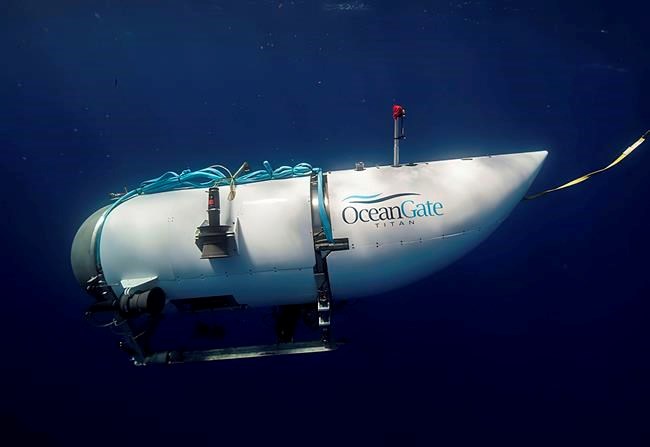ST. JOHN'S, N.L. — The small submersible missing in the depths of the North Atlantic Ocean has not been subject to industry-standard tests and scrutiny, according to two subsea engineers who flagged concerns about the vessel in 2018.
Bart Kemper, principal engineer with Kemper Engineering Services in Louisiana, described the development of OceanGate’s Titan submersible as "experimental with no oversight.” That approach is not at all representative of typical industry practice, Kemper said in an interview Tuesday.
He said the Titan’s disappearance Sunday as it descended toward the wreck of the Titanic is “horrible.”
"These are literally the things that keep us up at night because we don't want to be responsible for one of these stories. We take this seriously,” Kemper said of his subsea engineering colleagues. “It’s heartbreaking.”
Crews from the United States and Canada raced to find the Titan and the five people inside it Wednesday, as its oxygen reserves depleted. The 6.7-metre-long submersible lost contact with its mother ship on Sunday, about an hour and 45 minutes after it began its voyage to the Titanic shipwreck about 700 kilometres off the southeast coast of Newfoundland.
William Kohnen, president and CEO of the California-based engineering firm Hydrospace Group, was hesitant to comment on the situation in an interview Tuesday night, as the search has not yet concluded. But he said it's difficult to know what went wrong because the Titan isn't classed.
When a craft undergoes classification, a recognized third-party agency reviews its design and construction to ensure it has been tested properly and that it's safe, Kohnen said. Engineers, he explained, know how a submersible should be designed and equipped to be safe. But since the Titan isn't classed, "we do not know what system the vehicle has or does not have," he said.
Classification is not required by law, but the Titan's disappearance may increase pressure to change that, he said, adding that 95 per cent of all submersibles are classed.
Titan "is very much an outlier," said Kohnen, who is originally from Montreal.
A group of engineers and industry experts, including Kemper and Kohnen, wrote a 2018 letter addressed to OceanGate CEO Stockton Rush, first obtained by The New York Times, warning that the company's "experimental" approach to the vessel could have "catastrophic" consequences. Those behind the letter were particularly concerned about OceanGate's stated mission to invite members of the public aboard Titan for a nearly four-kilometre journey into the sea; they worried the public wouldn't understand the vessel wasn't classed, Kemper said.
Rush is among the five people who were on the Titan when it disappeared, officials have confirmed.
Kohnen said the letter was "leaked" to Rush and that he discussed its contents with the OceanGate CEO. In response, the company made changes to its public messaging, and made it clear that Titan was not classed, Kohnen said.
"But we still have an uncertified submarine here," he said.
Representatives from OceanGate did not return interview requests on Wednesday.
In a 2019 blog post, OceanGate explained that Titan was not classed because the classification process could inhibit innovation and did not address pilot error, which it said are the cause of most marine accidents.
"Our risk assessment team looks at the entire expedition and completes a detailed, quantified risk assessment for each dive, the post reads. "The risk assessment takes into account 25 specific factors that can influence a dive outcome. Using that information, a dive plan is written to mitigate against these known risks."
This report by The Canadian Press was first published June 21, 2023.
Sarah Smellie, The Canadian Press



